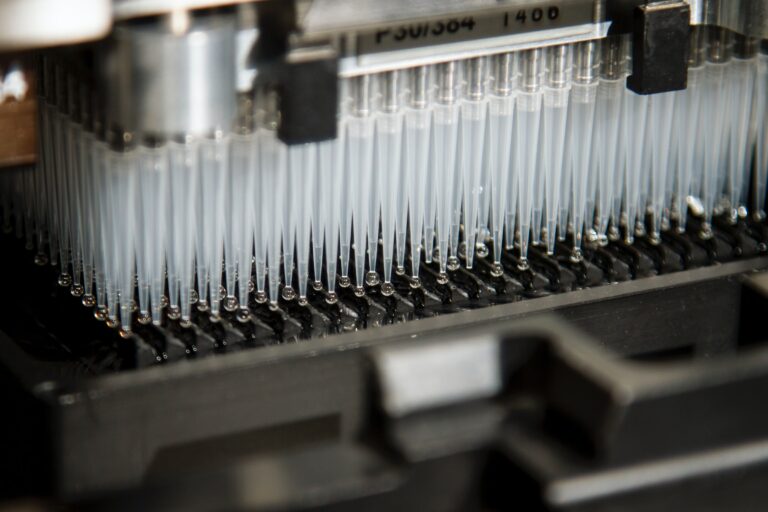In Budget 2021-22, the Australian Government announced that it would introduce a ‘patent box’ scheme for Australian medical and biotechnology industries. Under the proposed scheme, income derived from Australian medical and biotechnology patents would be taxed at a concessional rate of 17%, which is significantly below the headline corporate tax rate of 30% that applies to the largest companies (with a turnover more than $50 million per annum). The concession will apply to income derived from 1 July 2022 from granted patents, which were applied for after the Budget announcement. Budget Paper (No. 2) states that the patent box scheme ‘would further encourage innovation’ in Australia (p. 23).
However, in light of international evidence which indicates that patent boxes are generally not effective in stimulating innovation, is this the right approach? We suggest that a goal of stimulating innovation would be better realised through improving the effectiveness of the Research & Development (R&D) Tax Incentive, which has been the cornerstone of Australian innovation policy for nearly forty years.
A tool for tax competition?
In recent decades, more than 20 countries (mostly in Europe) have introduced patent box regimes. The literature has viewed patent boxes as a tax competition tool, which induces the transfer of patents between tax jurisdictions, rather than a means of fostering R&D and innovation.
In a 2019 National Bureau of Economic Research working paper by Gaessler, Hall and Harhoff, which examines patent boxes in 13 European countries from 2000-2014, the authors find that the introduction of a patent box regime to a country is associated with a significant decline (of around 30%) in patents transferred out of that country (p. 4). The authors also find evidence of an increase in patents transferred to the country. They conclude that multinational firms tend to take advantage of favourable tax rates for patent income by moving patents across member firms within their group, particularly for high-value patents.
These results are consistent with Alstadsæter et al (2018), which analysed the use of patent box regimes in 2000-2011 by the top 2000 R&D corporate investors worldwide. This paper concludes that the main effect of patent boxes is to attract multinationals to shift the location of their patents to countries with lower tax rates (p. 166).
Local activity requirements are key to encourage domestic inventors
A significant finding of these studies is that the introduction of a patent box regime does not generally lead to an increase in local R&D spending or patented inventions. However, if the patent box regime incorporates local R&D development conditions, this appears to have a positive impact on domestic inventorship.
Alstadsæter et al note that half of the patent box regimes examined (six out of twelve) did not require any development work by the taxpaying company; of the half that did impose such a requirement, there was considerable variation in the ‘definition and strength’ of conditions imposed (p. 144).
For example, the Belgium patent box requires that the taxpayer company have fully or partially developed the patent in a Belgian R&D centre whereas some other regimes permit the intellectual property (IP) to have been fully developed by another company in the group, provided the company that pays tax in the patent box country actively manages the IP.
The details of the Australian patent box scheme have yet to be worked out, but the Budget Papers do refer to a requirement of ‘domestic development’ that ‘will encourage additional investment and hiring in research and development activity.’ The imposition of a local R&D activity requirement is essential if the patent box is to achieve the Government’s stated goal of encouraging innovation in Australia.
The ‘nexus’ test and harmful tax practices
The incorporation of sufficiently demanding R&D development conditions in patent box regimes is also justified by broader tax policy considerations.
In 2015, the OECD’s Forum on Harmful Tax Practices published a report which examined base erosion and profit shifting concerns posed by patent box and IP regimes. The Forum report sets out a ‘substantial activity’ requirement that had been agreed among participants as the best way to counter profit shifting risks. There was in principle agreement that the taxation of profits in patent box schemes should be aligned with the substantial activities that generate them.
The Forum and the G20 ultimately endorsed the ‘nexus approach’, which uses expenditure as a proxy for activity. This approach seeks to ensure that tax benefits from patent and IP box regimes are only given to the taxpayer ‘to the extent that the taxpayer itself incurred the R&D expenditures that contributed to that IP’ (p. 31). If the taxpayer acquired the patent or outsourced the R&D activities to a related party, the Forum report indicated the income generated from the IP should not be eligible for preferential tax treatment.
The nexus approach follows the same principle underlying R&D tax credits and other ‘front end’ measures, which directly link the availability of tax benefits to the extent of R&D activities (p. 24). A substantial proportion of pre-existing patent box regimes did not provide for any development conditions. These fail to meet the nexus approach endorsed by the OECD and will need to be reformed or repealed.
R&D concessions are a better way to use tax policy to stimulate innovation
With both OECD and empirical studies indicating that R&D development conditions are needed if patent box regimes are to have any prospect of fostering innovation, improving existing R&D tax incentives is the more obvious and direct way to encourage local innovation.
Australia has provided tax benefits for R&D since 1985. The current R&D Tax Incentive (which has applied since 2011) provides a tax offset for eligible R&D tax expenditures. Entities with a turnover of less than $20 million per year can claim a 43.5% refundable tax offset for eligible R&D expenditures, with a 38.5% non-refundable offset available to other entities.
In 2016, a review of the R&D Tax Incentive commissioned by the Government was led by Innovation Australia, the Chief Scientist of Australia and Treasury. Their detailed report concluded that the effectiveness and integrity of the R&D scheme could be improved. There was an attempt in 2019 to legislate some recommendations of the review panel related to better targeting of the scheme, and improved integrity and administrative measures.
However, the more visionary aspect of the panel’s recommendations have not been acted upon. The review found that the existing scheme did not encourage collaborative R&D. Relying on international evidence, it recommended that the existing R&D tax scheme be adapted to provide a collaboration premium of 20% of the non-refundable offset where R&D is undertaken in collaboration with a publicly funded research organisation (p. 3).
The goal of encouraging collaborative R&D, especially between companies and publicly funded research organisations, was said by the review to be more likely to produce ‘R&D spillovers by increasing personal connections and professional networks by facilitating a greater flow of knowledge between staff’ (p. 31). Mercuri and Birbeck have also argued that Australia’s R&D tax incentive policy should encourage industry-university collaborations, which would lead to efficiencies and ‘creative stimulus in R&D activity with the potential of concordant financial and non-financial benefits to both’.
The Government should aim to give effect to the bolder evidence-based recommendations from the 2016 R&D incentive review. Introducing a patent box is unlikely, based on international evidence, to be an effective means of stimulating innovation.
Other Budget Forum 2021 articles
Structural Changes, but No Sustainability Reset, by Miranda Stewart.
This Was an Election Budget on Steroids, by John Hewson.
The Volunteer Workforce Is Key to Achieving Budget Priorities, by Sue Regan.
Looming Tax Cuts Prevent Genuine Expenditure Reform, by Maria Racionero.
Could It Pack a Punch? Maybe, but There’s a Lot at Stake: The Reactivation of the Corporate Collective Investment Vehicle, by Alex Evans.
Don’t Shoot in the Dark: Business Support in the Australian Budget, by Andrés Bellofatto, Begoña Dominguez and Jorge Miranda-Pinto.






Recent Comments